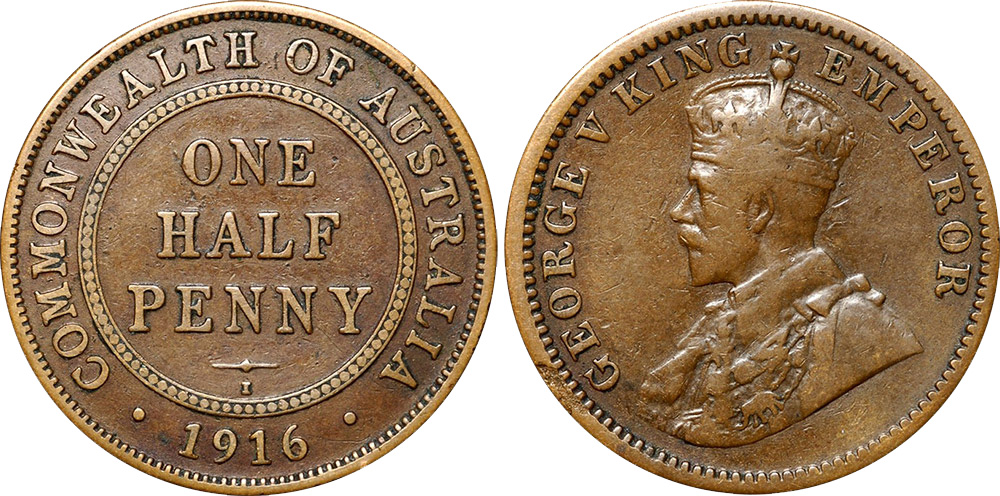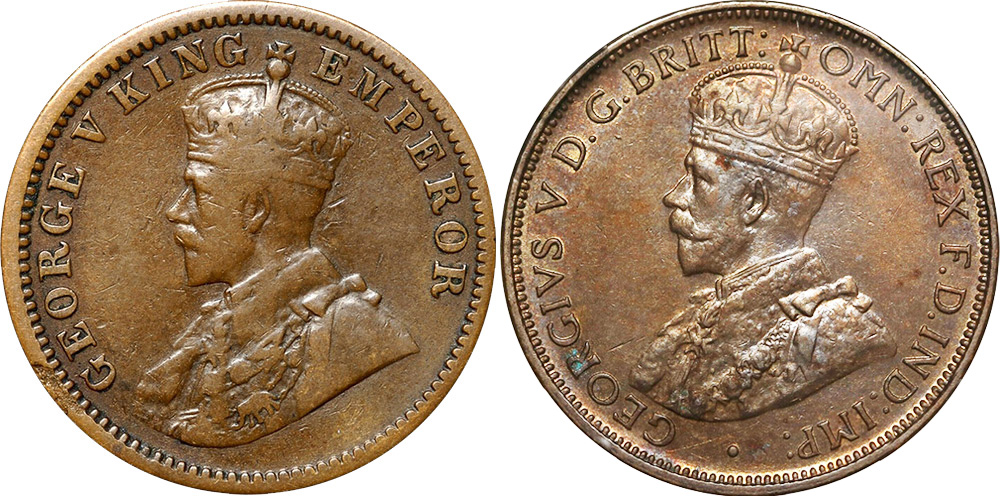Halfpenny 1916 Mule - Rarest and most valuable Australian half-penny coin
By CAA | Wednesday, 6 November 2019
Considered the rarest and most valuable australian halfpenny, approximatly 10 examples of the 1916 mule are known and all have been pulled from circulation in Australia. While the Calcutta Mint was striking the Indian quarter annas and the Australia half penny 1916 coins, intentionally or not, obverse dies from both coins were paired creating the mule. The finds occurring decades after the original issue are met with skepticism by dealers and collectors across Australia and often assign them as fake.
It needed the nationwide surge of interest in coins in the months leading up to decimalization of Australia's currency in 1966 to bring the first mule to light. This occurred in June 1965 when collector Cecil Poole of Norma Street, Mile End, Adelaide, identified one while searching for another coin. He recognized the English obverse legend and elephant on George V's robe as being un-Australian.
Poole reported his discovery on July 8 to a meeting of the Numismatic Society of South Australia. That announcement was picked up by the Adelaide Advertiser who ran a sensational headline on July 14: Biggest Find in Coin History.
The day before Poole's announcement Darcy Koschade of Fullarton Victoria had shown one to coin dealer Ian Muddle. Koschade had inherited it from his brother. This was the coin referred to above that family recollections recall as having been discovered c. 1930-33. When it was subsequently offered at auction the late Dion Skinner purchased it for £80.
Once the word was out on the streets other mules began to turn up as people checked their small change. A second Victorian example surfaced on July 25, 1965, spotted by C. H. Grause of Fitzroy. In October the Adelaide Advertiser reported Marie Calderwood had found a fourth. A fifth was purchased by a sharp-eyed collector from a Sydney dealer for threepence later that year.
Both the British Royal Mint and the Royal Australian Mint examined examples including x-raying each. All showed the same perfect registration of obverse and reverse. The two mints pronounced them genuine. This failed to fully satisfy some of the more trenchant skeptics and John Gartner arranged for three specimens to be sent to an independent panel in the U.K. This comprised specialists from The British Museum and Spink & Sons plus Howard Linecar. They had no problems in declaring the mules to be the real McCoy.
Numismatic News
First discoveries
- July 8, 1965: Cecil Poole, West Richmond, SA.
- July 15, 1965: Darcy Koschade, Fullarton VIC.
- July 25, 1965: C. H. Grause, Fitzroy, VIC.
- October 10, 1965: Marie Calderwood.
5 examples were discovered between July and December 1965.

Half penny 1916 Mule coin struck at Calcutta Mint.
Current (2019) known owners of a 1916-I Mule Halfpenny
Certified examples known
- PCGS F-15
- PCGS VF-35
- PCGS EF Genuine - Damaged
The Indian quarter annas is similar in size (diameter) and composition of the Australian halfpenny and the obverses look quite similar. Nut there are several differences including the weight (5.6g vs 4.9g) and thickness (1.5mm vs 1.35mm). The Indian quarter annas obverses has:
- Simple legend
- An elephant at the bottom of the bust
- No pearls in the band of the crown

Quarter annas obverse (left). Australian halfpenny obverse (right).
Halfpenny 1916-I H Mule prices and values




